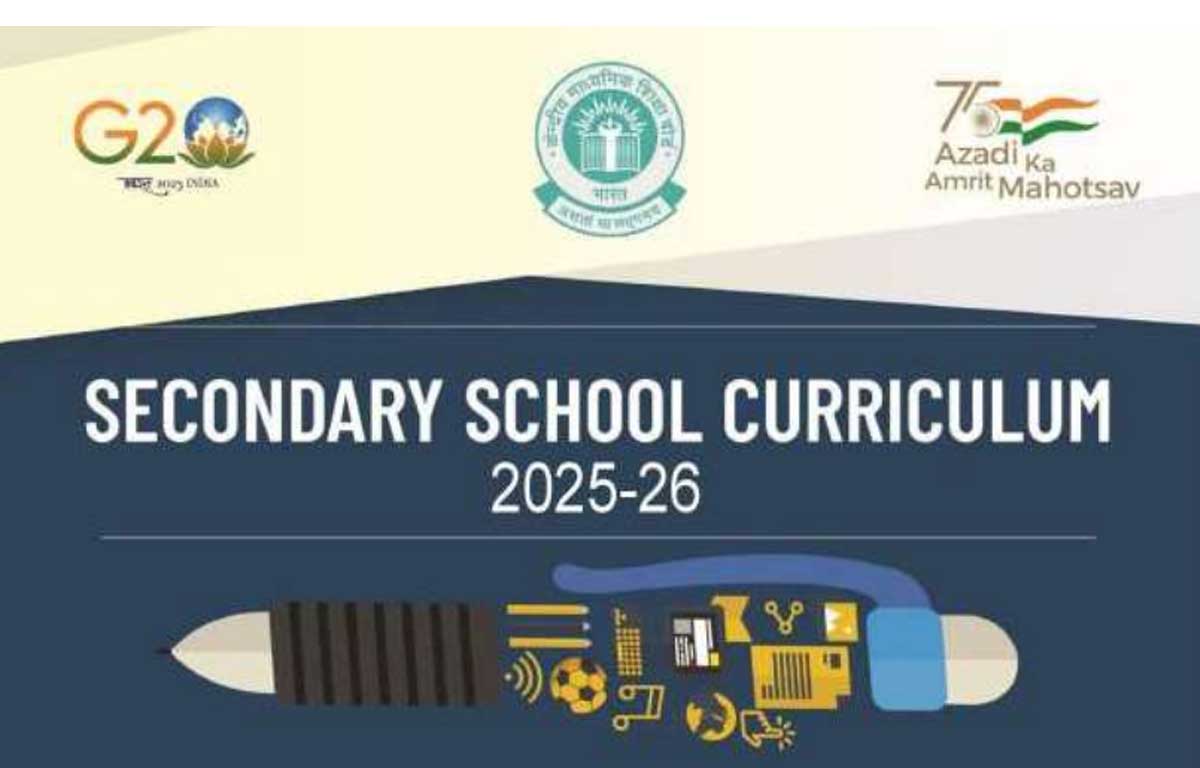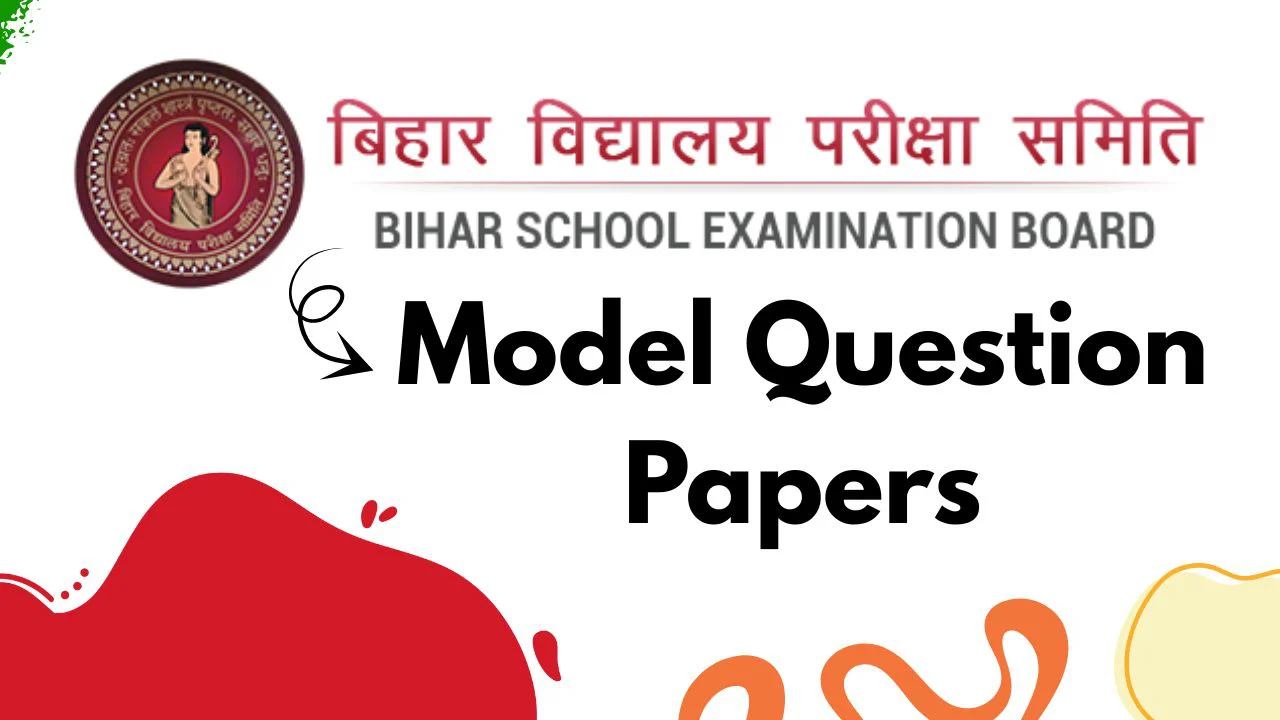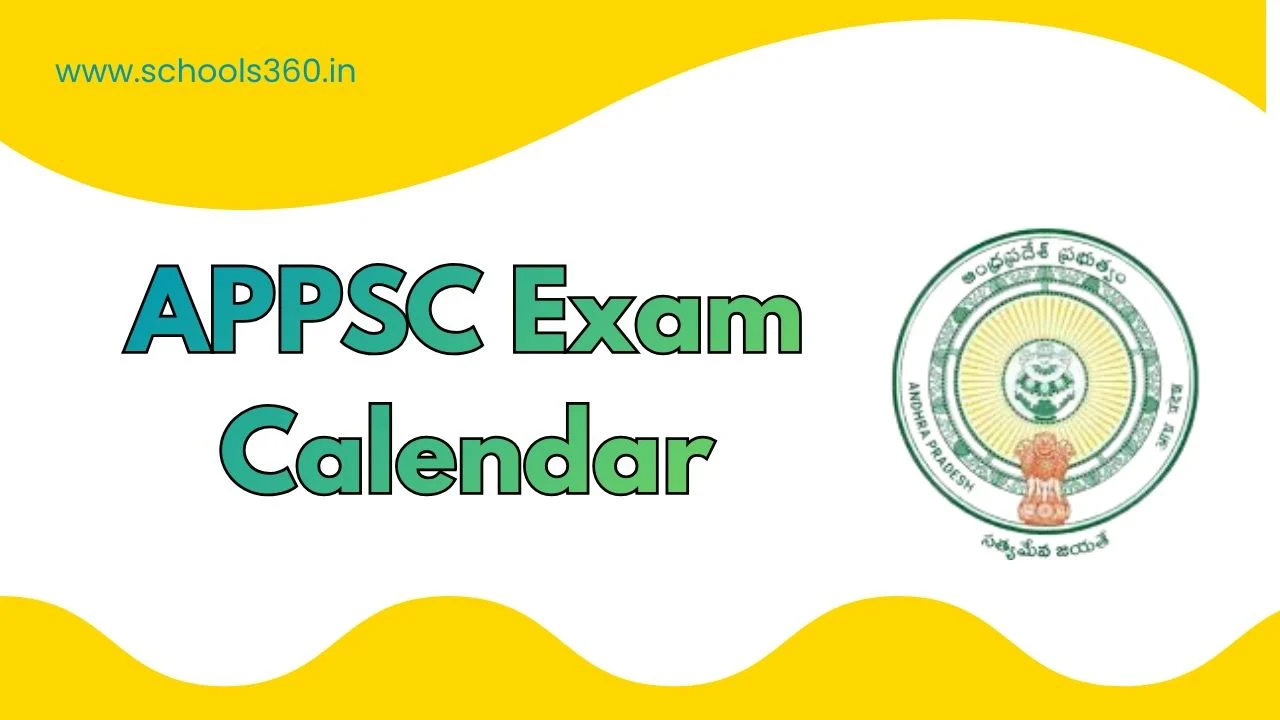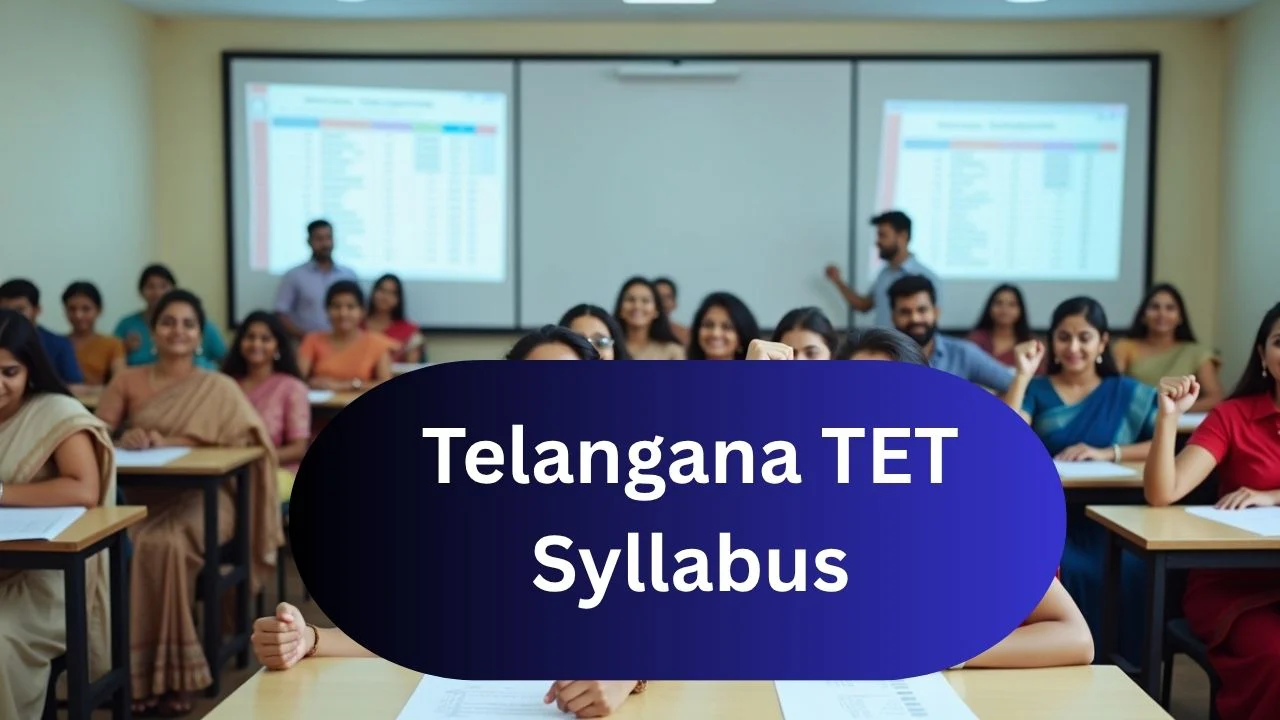CBSE Secondary School Curriculum PDF for Class 9th & 10th: The Central Board of Secondary Education (CBSE) has Released a CBSE Secondary School Curriculum for Class 10 for the Academic Year 2025-2026. For this Year, CBSE has Discontinued Terms, and the Total syllabus will be applicable from this academic session onwards. From this Year onwards, the board will conduct one board exam at the end of the year.
CBSE Class 9 & Class 10 Exam Structure
| CBSE Syllabus 2025-26 – Class 9 and Class 10 | |
| Name of the Board | Central Board of Secondary Education (CBSE) |
| Level | National Level |
| Category | Syllabus |
| Class | Class 9 & 10 |
| Academic Year | 2025-26 |
| Download Type | Free pdf Download |
| official Website | www.cbse.nic.in |
CBSE Class 9 & Class 10 Scheme of Study: Subjects to be offered
| Subject 1 | Language 1 | Language I (Hindi – Course A or Course B or English Language and Literature or English Communicative) | Compulsory |
| Subject 2 | Language 2 | Anyone from the Group of Languages (Group L) other than the Language chosen as Subject 1 | |
| Subject 3 | Social Science | Group- A1 | |
| Subject 4 | Mathematics | Group- A1 | |
| Subject 5 | Science | Group- A1 | |
| Subject 6 | Skill Subject/another subject from A2 | Group-S/A2 | Optional |
| Subject 7 | Language III / Any subject from A2 | Group-L/A2 | |
| Subject 8 and | Art Education | Compulsory Subjects having only school-based internal assessment | |
Subject 9 | Health and Physical Education | ||
| Assessment and certification at school level | Work Experience* |
* subsumed in Health and Physical Education
Languages under Group L
Languages include Hindi, English, and 38 other languages. The curricula in languages focus on listening, speaking, reading and writing skills and, hence, develop effective proficiencies in all these areas. Learners use language to comprehend, acquire, and effectively communicate ideas. CBSE also encourages schools to provide multilingual and multicultural experiences to promote national integration
| LANGUAGE (GROUP-L) | |||||||
| S. No. | CODE | Name | Theory Marks | Time (h) | Internal Marks | Total Marks | |
1 | 2 | Hindi Course-A | (ANY ONE) | 80 | 3 | 20 | 100 |
| 85 | Hindi Course-B | 80 | 3 | 20 | 100 | ||
2 | 184 | English Lang & Lit. | (ANY ONE) | 80 | 3 | 20 | 100 |
| 101 | English Communicative | 80 | 3 | 20 | 100 | ||
3 | 3 | Urdu Course-A | (ANY ONE) | 80 | 3 | 20 | 100 |
| 4 | Urdu Course-B | 80 | 3 | 20 | 100 | ||
| 4 | 4 | Punjabi | 80 | 3 | 20 | 100 | |
| 5 | 5 | Bengali | 80 | 3 | 20 | 100 | |
| 6 | 6 | Tamil | 80 | 3 | 20 | 100 | |
7 | 7 | Telugu | (ANY ONE) | 80 | 3 | 20 | 100 |
| 89 | Telugu Telangana | 80 | 3 | 20 | 100 | ||
| 8 | 8 | Sindhi | 80 | 3 | 20 | 100 | |
| 9 | 9 | Marathi | 80 | 3 | 20 | 100 | |
| 10 | 10 | Gujarati | 80 | 3 | 20 | 100 | |
| 11 | 11 | Manipuri | 80 | 3 | 20 | 100 | |
| 12 | 12 | Malayalam | 80 | 3 | 20 | 100 | |
| 13 | 13 | Odia | 80 | 3 | 20 | 100 | |
| 14 | 14 | Assamese | 80 | 3 | 20 | 100 | |
| 15 | 15 | Kannada | 80 | 3 | 20 | 100 | |
| 16 | 16 | Arabic | 80 | 3 | 20 | 100 | |
| 17 | 17 | Tibetan | 80 | 3 | 20 | 100 | |
| 18 | 18 | French | 80 | 3 | 20 | 100 | |
| 19 | 20 | German | 80 | 3 | 20 | 100 | |
| 20 | 21 | Russian | 80 | 3 | 20 | 100 | |
| 21 | 23 | Persian | 80 | 3 | 20 | 100 | |
| 22 | 24 | Nepali | 80 | 3 | 20 | 100 | |
| 23 | 25 | Limboo | 80 | 3 | 20 | 100 | |
| 24 | 26 | Lepcha | 80 | 3 | 20 | 100 | |
| 25 | 88 | Bhoti | 80 | 3 | 20 | 100 | |
| 26 | 92 | Bodo | 80 | 3 | 20 | 100 | |
| 27 | 91 | Kok Borok | 80 | 3 | 20 | 100 | |
| 28 | 93 | Tangkhul | 80 | 3 | 20 | 100 | |
| 29 | 94 | Japanese | 80 | 3 | 20 | 100 | |
| 30 | 95 | Bhutia | 80 | 3 | 20 | 100 | |
| 31 | 96 | Spanish | 80 | 3 | 20 | 100 | |
| 32 | 97 | Kashmiri | 80 | 3 | 20 | 100 | |
| 33 | 98 | Mizo | 80 | 3 | 20 | 100 | |
| 34 | 99 | Bahasa Melayu | 80 | 3 | 20 | 100 | |
35 | 122 | Sanskrit | (ANY ONE) | 80 | 3 | 20 | 100 |
| 119 | Sanskrit Communicative | 80 | 3 | 20 | 100 | ||
| 36 | 131 | Rai | 80 | 3 | 20 | 100 | |
| 37 | 132 | Gurung | 80 | 3 | 20 | 100 | |
| 38 | 133 | Tamang | 80 | 3 | 20 | 100 | |
| 39 | 134 | Sherpa | 80 | 3 | 20 | 100 | |
| 40 | 136 | Thai | 80 | 3 | 20 | 100 | |
COMPULSORY SUBJECTS (GROUP-A1)
| S. No. | CODE | Name | Theory Marks | Time (h) | Internal Marks | Total Marks | |
1 | 41 | Mathematics Standard | (ANY ONE) | 80 | 3 | 20 | 100 |
| 241 | Mathematics-Basic | 80 | 3 | 20 | 100 | ||
| 2 | 86 | Science | 80 | 3 | 20 | 100 | |
| 3 | 87 | Social Science | 80 | 3 | 20 | 100 | |
Social Science
Social Science (Geography, History, Economics and Political Science) intends to make learners understand how people behave, interact and influence the world within their cultural, geographical and historical milieus and gain in-depth knowledge, attitude, skills and values necessary to bring about transformation for a better world. It aims to develop the ability to analyse complex social, political, historical, economic and environmental issues, think critically, assess different solutions, understand different perspectives, and effectively communicate information. Social Science includes the learning of history and culture, geographical environment, global institutions, constitutional values and norms, politics, economy, interpersonal and societal interactions, civic responsibilities and the incorporation of the above-mentioned learning. Learners appreciate and value everyone’s right to feel respected and safe, and, also understand their Fundamental Rights and Duties and behave responsibly in the society.
Science
Science: (Biology, Chemistry and Physics) seeks to explain the rules that govern the natural phenomenon through scientific methods. The focus is on knowledge and skills to develop a scientific temper and to use and apply scientific knowledge for improving the quality of life. The Curriculum promotes the ability to engage with science related issues, and with the ideas of science, as a reflective citizen by being able to explain phenomena scientifically, evaluate and design scientific enquiry, and interpret data and evidence scientifically. Students understand the importance of to apply scientific knowledge in the context of real- life situations and gain competencies that enable them to participate effectively and productively in life.
Mathematics
Mathematics is the abstract science of number, quantity, and space, either as abstract concepts or as applied to other disciplines such as sciences, technology, and engineering. Mathematics includes acquiring the concepts related to number sense, operation sense, computation, measurement, geometry, probability, and statistics, the skill to calculate and organize, the ability to apply this knowledge and acquired skills in their daily life, and the skills to think mathematically. It also includes an understanding of the principles of reasoning and problem-solving. Children learn to rationalize and reason about pre-defined arrangements, norms, and relationships to comprehend, decode, validate, and develop relevant patterns. Mathematics is offered at two different levels, i.e., Mathematics (Basic) & Mathematics Standard, to suit the needs of different learners.
OTHER SUBJECTS (GROUP-A2)
| OTHER SUBJECTS (GROUP-A2) | |||||||||
| S. No. | CODE | Name | Theory Marks | Time (h) | Internal Marks | Practical | Project | Total Marks | |
1 | 31 | Carnatic Music (Vocal) | (Any One) | 30 | 2 | 20 | 50 | — | 100 |
| 32 | Carnatic Music (Melodic Instruments) | 30 | 2 | 20 | 50 | — | 100 | ||
| 33 | Carnatic Music (Percussion Instruments) | 30 | 2 | 20 | 50 | — | 100 | ||
| 34 | Hindustani Music (Vocal) | 30 | 2 | 20 | 50 | — | 100 | ||
| 35 | Hindustani Music (Melodic Instruments) | 30 | 2 | 20 | 50 | — | 100 | ||
| 36 | Hindustani Music (Percussion Instruments) | 30 | 2 | 20 | 50 | — | 100 | ||
| 2 | 49 | Painting | 30 | 3 | 20 | 50 | — | 100 | |
| 3 | 64 | Home Science | 70 | 3 | — | 30 | — | 100 | |
| 4 | 76 | National Cadet Corps (NCC) | 70 | 3 | 30 | — | — | 100 | |
| 5 | 165* | Computer Applications | 50 | 2 | — | 50 | — | 100 | |
| 6 | 154 | Elements of Business | (Any One) | 70 | 3 | — | 30 | — | 100 |
| 254 | Elements of Book Keeping & Accountancy | 70 | 3 | — | — | 30 | 100 | ||
Skills Electives
According to the National Education Policy 2020 aims to overcome the social status hierarchy associated with vocational education and integration of vocational education into mainstream education in all educational institutions in a phased manner. Beginning with vocational exposure at early ages in middle and secondary school, CBSE has started quality vocational education through 12-hour modules for classes VI-VIII. In secondary classes Board offers variety of competency-based subjects under NSQF like Retail, Information Technology, Marketing & Sales, Banking, Finance, AI etc. Choosing any one Skill subject at secondary level can helps the child to pursue what truly interests or pleases him or her. This liberty promotes a sense of self-esteem in accepting one’s own talents and strengths. CBSE is actively facilitating the Skill Hubs initiatives in its schools and also looking forward to operationalise National Credit Framework (NCrF) to enable the integration of academic and vocational domains to ensure flexibility and mobility between the two. The curriculum and the study material for the Skill Electives is available on the CBSE academic website under the tab ‘Skill Education’ and can be accessed through the link: http://cbseacademic.nic.in/skilleducation. html.
SKILL SUBJECTS (GROUP-S)
S. No. | Code | Name | Job Roles | Marks Distribution | |
| Theory | Practical | ||||
| 1 | 401 | Retail | Store Operations Assistant | 50 | 50 |
| 2 | 402* | Information Technology | Domestic IT Executive/Operator | 50 | 50 |
| 3 | 403 | Security | Unarmed Security Guard | 50 | 50 |
| 4 | 404 | Automotive | Automotive Service Technician | 50 | 50 |
| 5 | 405 | Introduction to Financial Markets | Business Correspondent | 50 | 50 |
| 6 | 406 | Introduction to Tourism | Assistant Tour Guide | 50 | 50 |
| 7 | 407 | Beauty & Wellness | Assistant Beauty Therapist | 50 | 50 |
| 8 | 408 | Agriculture | Solanaceous Crop Cultivator | 50 | 50 |
| 9 | 409 | Food Production | Assistant Chef (reg.) | 50 | 50 |
| 10 | 410 | Front Office Operations | Front Office Executive | 50 | 50 |
| 11 | 411 | Banking & Insurance | Field Executive | 50 | 50 |
| 12 | 412 | Marketing & Sales | Marketing Assistant | 50 | 50 |
| 13 | 413 | Health Care | General Duty Assistant | 50 | 50 |
| 14 | 414 | Apparel | Hand Embroider | 50 | 50 |
| 15 | 415 | Multi-Media | Texture Artist | 50 | 50 |
| 16 | 416 | Multi Skill Foundation Course | Multi Skill Assistant | 50 | 50 |
| 17 | 417* | Artificial Intelligence | 50 | 50 | |
| 18 | 418 | Physical Activity Trainer (New) | Early Years Physical Activity Trainer | 50 | 50 |
| 19 | 419 | Data Science | 50 | 50 | |
| 20 | 420 | Electronics and Hardware (New) | Field Technician-Other Home Appliances | 50 | 50 |
| 21 | 421 | Foundation Skills for Sciences (Pharmaceutical and Biotechnology) (New) | 50 | 50 | |
| 22 | 422 | Design Thinking and Innovation (New) | 50 | 50 | |
Art Education
It entails instruction in various art forms (visual and performing) to help children develop an interest in arts and encourage them to enthusiastically participate in related activities, thus promoting abilities such as imagination, creativity, and valuing arts and cultural heritage. In addition, Arts should be integrated with other subjects to promote creative thinking and expression.
Health and Physical Education
Health and Physical Education focuses on holistic mental and physical development, understanding the importance of physical fitness, health, well-being, and the factors that contribute to them. This area focuses on helping children develop a positive attitude and commitment to lifelong, healthy, active living and the capacity to live satisfying, productive lives with the help of health management, indigenous sports, Yoga, NCC, self-defense, fitness, and lifestyle choices.
Work Experience
Work Experience: The Work Experience has been subsumed in Health and Physical Education, however, it is an integral part of the curriculum and is given as much as focus as Health and Physical Education.










